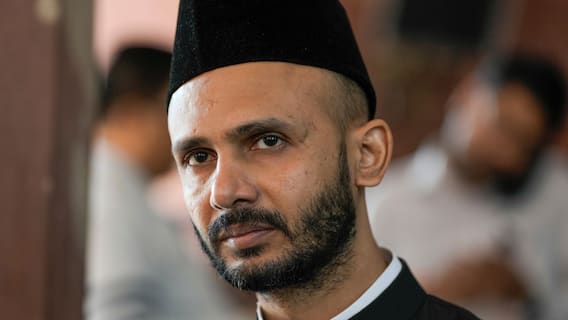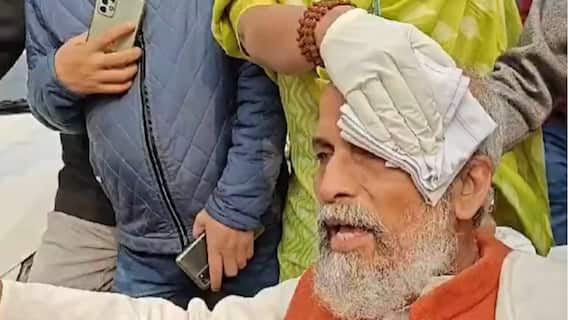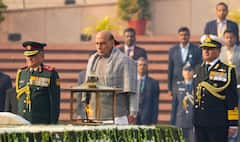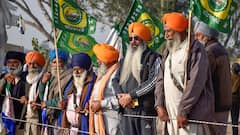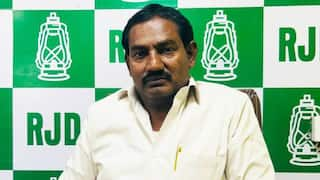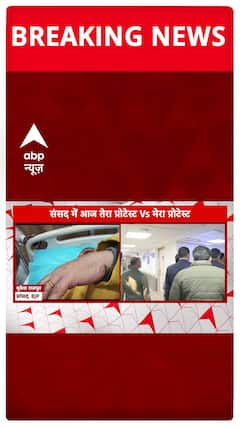Meri Awaaz Hi Pehchaan Hai… Lata Mangeshkar, A Voice That Will Live On
Lata Mangeshkar is dead but the music plays on – in a seemingly endless refrain, as it has for almost eight decades and likely for many more.

New Delhi: She made our hearts go up an octave or more with love and longing, moved us to tears of joy and sorrow, sometimes introspect and other times dance in abandon, her voice mirroring our every emotion, her songs covering the cadence of time and history from the gramophone to the digital age.
Lata Mangeshkar is dead but the music plays on – in a seemingly endless refrain, as it has for almost eight decades and likely for many more.
Mangeshkar, 92, who died on Sunday in a Mumbai hospital, sang not just in Hindi but in almost every other Indian language, that lilting voice emoting for actors down generations, from Madhubala to Preity Zinta and scores of others in between.
Hers is the ‘golden voice’ that millions of South Asians tune into when they wake up and often the last thing they hear before calling it a day, the beating heart of a shared memory passed down generations.
The monikers are many — ‘melody queen’, ‘India’s nightingale’, ‘the voice of the millennium’ and simply ‘Lata didi’ for many.
The Indore-born Mangeshkar’s first recorded song was in 1942 in the Marathi film “Kiti Hasaal” when she was just 13. In October last year, 79 years later, Vishal Bhardwaj released “Theek Nahi Lagta”, a song with Mangeshkar’s favourite lyricist Gulzar that was believed to have been lost.
“That long journey is with me and that little girl is still with me. She has not gone anywhere. Some people call me ‘Saraswati’ or say that I have her blessings. They say I am this and that… “It is their blessing that people like whatever I sing. Otherwise, who am I? I am nothing,” Mangeshkar said in her last interview to PTI days after the song was released.
Her many millions of fans will disagree. For them, and even for those not familiar with her music, she is amongst the handful of Indians whose name strikes a chord in distant corners of the globe.
The body of work is so overwhelming that it is impossible to take stock of at one go, with opinion divided on whether it was 10,000 songs, 15,000 or 25,000.
There were the gems that sparkled in the crowd — from the non-filmy tribute to the Indian soldier, “Aye Mere Watan Ke Logon”, which she sang in the presence of Jawaharlal Nehru in 1963 and famously reduced him to tears and the classical “Mohe Panghat Pe” (“Mughal-e-Azam”) to the romantic “Ajeeb Dastaan Hai Ye” (“Dil Apna Aur Preet Parai”) and the seductive “Baahon me Chale Aao” (“Anamika”).
She was awarded the Bharat Ratna,India’s highest civilian honour, the Dadasaheb Phalke award and a host of others.
Unusually for someone so revered and so much in the public eye, Mangeshkar was always fiercely protective of her privacy.
The image of the soft spoken woman dressed invariably in white and pastels with diamonds sparkling in her ears, perhaps the only concession to her wealth and fame, has withstood the years.
She stayed single notwithstanding her much speculated relationship with cricketer Raj Singh Dungarpur, one which he spoke about and she never did. The much discussed competition with sister Asha Bhosle was also the stuff of headlines and rumours but nothing she ever bothered clarifying. Just like both the Mangeshkar sisters kept silent about the persistent talk about how they ruled the industry and did not let others rise in the industry. There were some other controversies, like her feud with Mohammed Rafi over royalties and her brief fallout with Raj Kapoor but those were just blips in a long career. The beginnings were humble.
Mangeshkar was born on September 28, 1929 to Pandit Deenanath Mangeshkar, a Marathi musician and Gujarati homemaker Shevanti in Indore. She was the eldest of five children – Meena, Asha, Usha and Hridaynath.
Her singing talent was accidentally discovered by her father, a musician and theatre artiste, when she was only five.
Her father’s untimely death brought the financial burden of the family on a 13-year-old Mangeshkar’s shoulders. Family friend Master Vinayak came to the aid of the family and Mangeshkar started singing and acting in his theatre company.
When she went to Mumbai, producer S Mukerji rejected her because he found her voice too thin. But fame was waiting just around the corner.
The song was “Aayega Aana Wala”, the film “Mahal” and the year 1949.
Playback singers were not priority and the haunting song, one of Mangeshkar’s most loved still, was initially credited to Kamini, Madhubala’s screen name in the film.
It was such a rage that people would call enquiring about the identity of the singer, forcing the radio station to contact HMV to ask who had sung the song, Mangeshkar recalls in Nasreen Munni Kabeer’s documentary “Lata Mangeshkar: In Her Own Words”. Lata Mangeshkar was identified on air. And the star was born.
The 1950s belonged completely to Mangeshkar who went on to work with composing greats such as Shankar Jaikishan, Naushad Ali, S D Burman, Hemant Kumar and Madan Mohan.
Though the money was not great, these were the busy years for Mangeshkar and sometimes would see her record six-to-eight songs in a day, go home, sleep for few hours and then catch the train again to a recording studio.
Her voice was such a guarantee of success that leading actors down the years would insist on Lata Mangeshkar being their voice, and put that condition down in their contracts.
In the 60s, Madhubala was once again the face for Mangeshkar’s voice in the evergreen “Mughal-E-Azam” with the defiant ‘Jab Pyaar Kiya to Darna Kya” becoming the byword for many a lovers rebellion.
The 60s also marked the beginning of her collaboration with Laxmikant-Pyarelal with whom Mangeshkar sang over 700 songs over a period of 35 long years, most of which became huge hits.
The period saw her record duets with Mukesh, Manna Dey, Mahendra Kapoor, Mohammed Rafi, and Kishore Kumar.
And of course the 70s will be remembered for Meena Kumari’s last film “Pakeezah” and “Abhimaan”.
The ’80s saw her working on films such as “Silsila”, “Chandni”, “Maine Pyar Kiya”, “Ek Duuje Ke Liye”, “Prem Rog”, “Ram Teri Ganga Maili” and “Masoom”.
Her most notable songs in the 1990s and 2000s were Gulzar-directed movie “Lekin” and Yash Chopra films “Lamhe”, “Darr”, “Dilwale Dulhania Le Jayenge” and “Dil To Pagal Hai”.
Mangshkar’s last full film album was “Veer-Zaara” in 2004.
Lata Mangeshkar is gone but will never be silenced.
“Whate’er the theme, the Maiden sang As if her song could have no ending”.
That was William Wordsworth in another era. But Lata Mangeshkar, her songs will have no ending.
Trending News
Top Headlines






